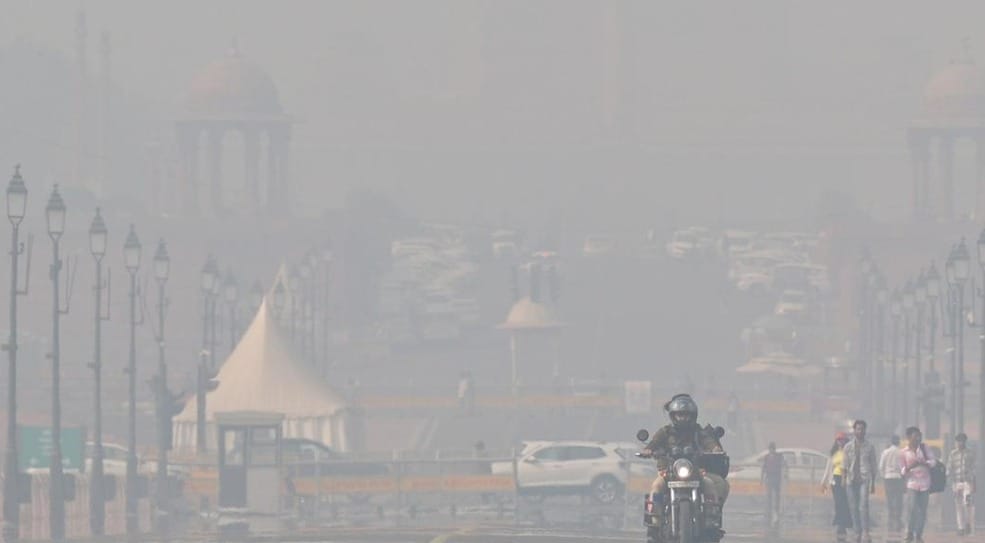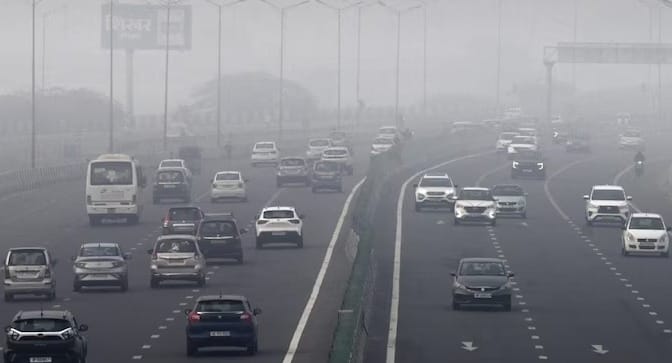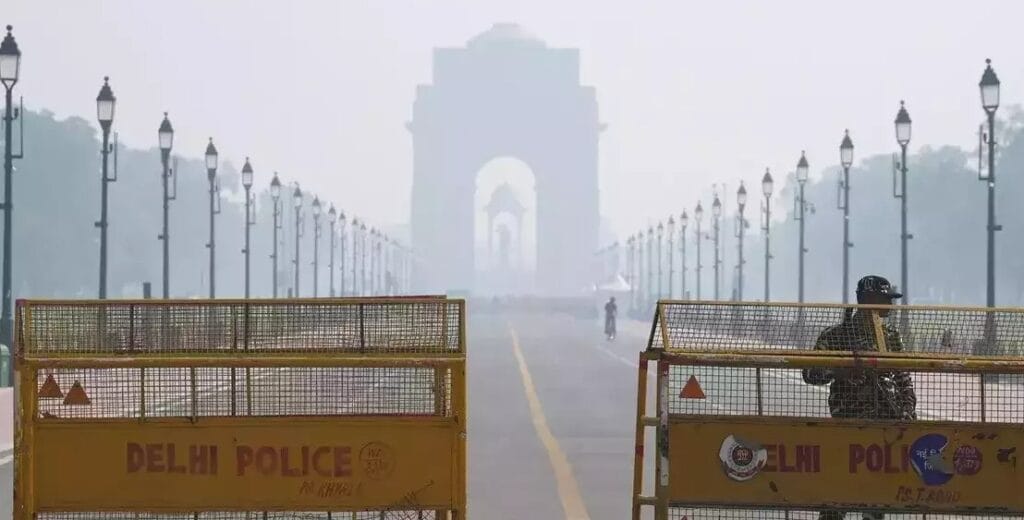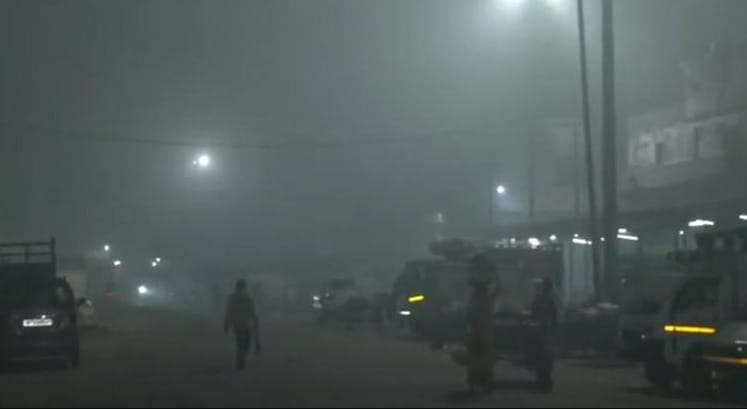Namaskaar Dosto!
Today, we will be discussing Delhi Gas Chamber an alarming issue that has become a major concern for the people of New Delhi – the rising pollution levels in the city, which have led to it being frequently referred to as the Delhi Gas Chamber. As India’s capital city, New Delhi is known for its rich history, culture, and political importance. However, over the past few years, the city has also earned the grim distinction of becoming one of the most polluted cities in the world. The term “Delhi Gas Chamber” is used to describe the hazardous air quality in the city, especially during the winter months when pollution reaches unbearable levels. Let’s dive deeper into why this is happening, what it means for the people living in the city, and the long-term consequences of such environmental degradation.
Table of Contents
What is the “Delhi Gas Chamber”?
The phrase Delhi Gas Chamber refers to the hazardous levels of air pollution that envelop the capital city, making it almost uninhabitable for many during certain months of the year. Air pollution in Delhi has reached such extreme levels that it has caused widespread concern among residents, authorities, and environmentalists alike. The air quality index (AQI) in Delhi often crosses dangerous limits, leading to severe health problems for the city’s 20 million-plus residents.

When AQI levels exceed 300, they are categorized as “hazardous,” and anything above 400 is considered “severe.” During the winter season, this problem becomes especially intense as the stubble burning in neighboring states like Punjab and Haryana, along with vehicular emissions, construction dust, and industrial fumes, combine to create a toxic smog. The situation worsens around Diwali, when fireworks release harmful chemicals into the atmosphere, further exacerbating the pollution.
The Causes of Delhi’s Air Pollution Crisis
There are several factors contributing to the Delhi Gas Chamber effect:

- Stubble Burning: One of the major causes of Delhi’s poor air quality is the practice of stubble burning in the nearby states of Punjab and Haryana. After the harvest season, farmers burn crop residues to clear their fields for the next sowing season. This practice releases large amounts of particulate matter into the air, which then travels to Delhi due to the prevailing wind patterns.
- Vehicular Emissions: Delhi is home to millions of vehicles, many of which are overused and poorly maintained. Exhaust fumes from these vehicles release harmful pollutants like carbon monoxide, nitrogen oxides, and particulate matter into the atmosphere. The increasing number of vehicles in the city is a major contributor to the pollution problem.
- Construction Activities: The rapid urbanization of Delhi has led to a boom in construction activities. Dust from these construction sites adds to the pollution levels. Additionally, the demolition of old buildings and the construction of new ones release large amounts of particulate matter into the air.
- Industrial Pollution: The presence of various industrial zones around Delhi also contributes to air pollution. Factories and power plants release smoke, chemicals, and gases into the atmosphere, further deteriorating the air quality.
- Fireworks during Festivals: During the festival season, especially Diwali, the bursting of fireworks releases massive quantities of harmful gases like sulfur dioxide, nitrogen oxide, and particulate matter into the air, making the already toxic air even more dangerous.
- Weather Conditions: Delhi’s winter weather, characterized by low temperatures and high humidity, traps pollutants close to the ground. This leads to a thick layer of smog that becomes difficult to disperse. The lack of wind during this time prevents the pollutants from dissipating, making it hard to breathe for the city’s residents.
Impact of the Delhi Gas Chamber
The Delhi Gas Chamber has serious consequences for the health of the city’s residents. The pollutants in the air, including particulate matter (PM2.5 and PM10), nitrogen oxides, carbon monoxide, and sulfur dioxide, can have a range of harmful effects on human health.

- Respiratory Diseases: Prolonged exposure to polluted air can lead to chronic respiratory conditions like asthma, bronchitis, and chronic obstructive pulmonary disease (COPD). The fine particulate matter, in particular, can penetrate deep into the lungs and cause irreversible damage.
- Cardiovascular Issues: Air pollution is also linked to an increased risk of heart attacks, strokes, and other cardiovascular diseases. The pollutants can cause inflammation in the heart and blood vessels, leading to long-term health problems.
- Increased Mortality Rates: Studies have shown that the poor air quality in Delhi has contributed to a rise in premature deaths. According to some estimates, air pollution is responsible for thousands of deaths annually in the city, particularly among children and the elderly.
- Reduced Visibility: The thick smog that engulfs Delhi during the winter months severely reduces visibility, causing frequent traffic accidents and making it unsafe for people to travel. The situation is particularly hazardous for those who have to commute long distances in the city.
- Economic Losses: The health impacts of air pollution in Delhi lead to increased healthcare costs and a loss of productivity due to illness. People spend more time in hospitals and miss work, which affects the economy. Additionally, the tourism industry, which is a significant source of income for the city, also suffers due to the poor air quality.
What Measures Are Being Taken?
The situation of Delhi as a gas chamber has attracted significant attention, and both the government and various organizations have started taking measures to address the problem.
- Odd-Even Scheme: In an attempt to control the number of vehicles on the road, Delhi has implemented the odd-even scheme, which limits the number of cars on the road based on the last digit of their number plates. This helps reduce vehicular emissions and improves air quality.
- Promotion of Electric Vehicles: The Delhi government is also promoting the use of electric vehicles (EVs) to reduce air pollution caused by conventional vehicles. Incentives and subsidies are being offered to encourage people to switch to EVs.
- Improved Waste Management: Steps are being taken to control the burning of waste, especially during the winter months, by introducing better waste management systems. There are also stricter regulations to prevent the illegal burning of waste.
- Strict Regulations on Stubble Burning: The central and state governments are working to discourage farmers from burning stubble by providing them with alternative solutions like the introduction of machines that can help them manage crop residue without setting it on fire.
- Awareness Campaigns: Environmental groups and the government are working on awareness campaigns to educate people about the dangers of air pollution and how they can help by adopting greener practices.

The Way Forward
While efforts are being made to tackle the issue of pollution in Delhi, the Delhi Gas Chamber is still a major concern. For these measures to be effective, it is crucial for the government, industries, and citizens to work together. Reducing pollution will require a holistic approach, including better waste management, reduced vehicular emissions, alternative energy sources, and stricter regulations on industrial pollution.
We all have a responsibility to ensure that our future generations do not have to live in a toxic environment. By making small changes in our daily lives, like reducing car usage, promoting cleaner energy, and spreading awareness, we can contribute towards improving the air quality in Delhi and ultimately, reduce its status as a gas chamber.
The issue of air pollution in Delhi, often referred to as the Delhi Gas Chamber, is a matter of grave concern. It has dire implications for the health of millions of people and the future of the city. While some measures are being taken, a collective effort is required from all sectors of society to address this growing crisis. Only through sustained efforts and environmental consciousness can we hope to clear the smog and create a healthier, safer Delhi for everyone.
Stay safe, take action, and breathe easy!
Stay tuned for more updates, and feel free to share your thoughts on the No. 1 Polluted city of Delhi in the comments below!
If you have any questions regarding technology, feel free to ask us in the comments below.
For more information, you can search for My Tech Flip on Google or visit our website at MyTechFlip.in
You can Buy the iPhone 16 Hot Cover from Amazon
1. Elzzi Compatible with iPhone 16 Case 3D Laser Flower Oil Painting Cute Colorful Blue Ray Bumper with Full Camera Protection Shockproof PC+TPU Glossy Shiny Cover for Girls Women
2. Elzzi Microfiber Logo Cut Cover Compatible for iPhone 16 Case Liquid Silicone Cases Full Body 4 Layer Protective Covers Shockproof Back Cover with High Raised Camera Lips
Until next time, take care and keep following for more tech insights!






